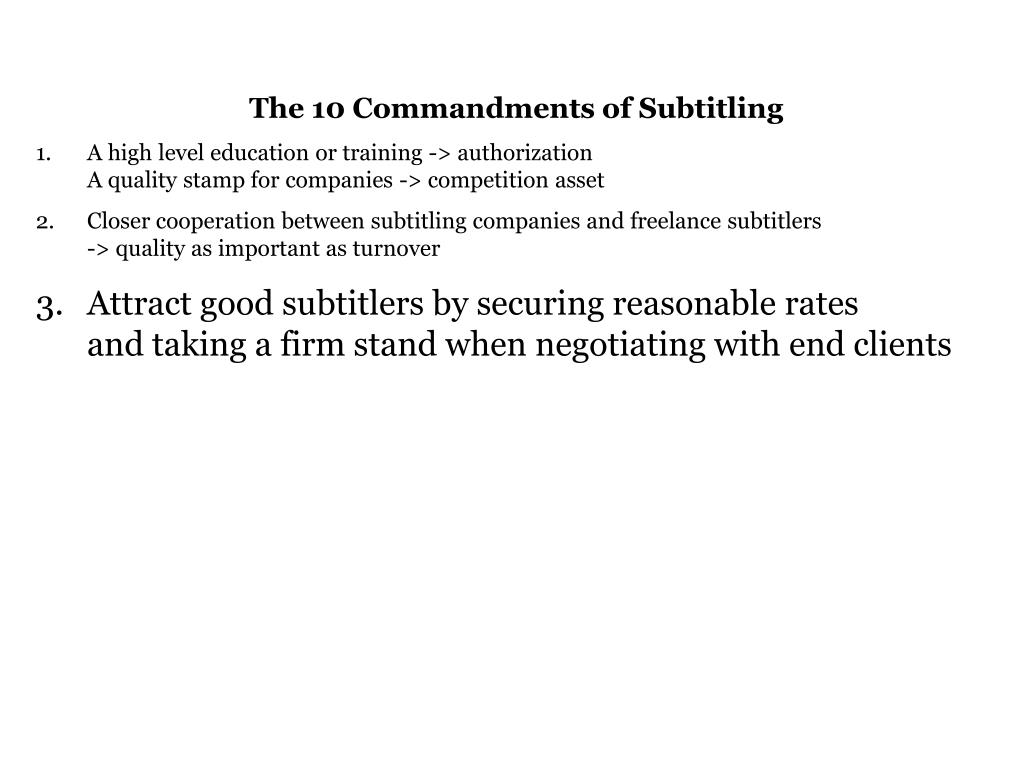
The truth is that real people get real jobs from Rev – and they are getting paid for those jobs. If you do a search online, then you’ll find no shortage of people claiming that Rev is a scam.Īnd if you dig a bit deeper, then you’ll find that the people making these claims have usually been fired from the company.

Rev has two offices in the United States, in Austin and San Francisco.Īnd they claim to have served almost 200,000 clients. The way that it works is people who need transcription, captioning, and foreign subtitling services come to Rev to find people you like you are signed up with Rev and can do the job for them.įreelancers who are signed up to take jobs with Rev are called Revvers. Rev is a place where you can find transcription, captioning, and foreign subtitling projects to work on.
#Subtitler salary professional
While the translation of a script into subtitles may be a little tricky at times, a professional translator can handle most subtitling situations capably.If you are an experienced transcriptionist, then you already know about Rev.īut if you’re a beginners, then you may not have heard of this platform before today. Subtitle services do not require additional writers, carefully chosen and paid actors, or carefully timed translations. Subtitles can be produced far more quickly than dubbing can. That's why subtitling a film is almost always your best option. And in the end, many movie-lovers disdain dubbing, saying that it removes the original intention and artistic vision of the film. You can see why dubbing costs a lot and takes so much time. It's tempting for less skilled actors to get a little heavy-handed with line delivery, thinking it equates to doing a good job of being dramatic.Īfter all of this, the revoiced script must be mixed with the original soundtrack's atmospheric sounds and music. It's also critical that the voice actors don't overact their part. You wouldn't want a 30-year-old man to read the part of a grandfather or a school-age child. These actors must be carefully selected so that their voice matches the appearance of the actor in the film. Next, the script must be revoiced by actors who speak the target language. In some cases, this job is too big for the translator, and a dialogue writer must be brought in to make the translation work better. So, the translator must not only be skilled in translating idioms and jokes, but also in making the translation fit a certain time window. Or the actor kept talking after the sound had stopped.

Maybe the actor stopped talking while the line trailed on. You probably recall watching some older or lower-quality films in which the dubbing didn't match the actor's mouth at all. In other words, when an actor's mouth is moving, the spoken translation shouldn't be noticeably shorter or longer. But this isn't a simple, straight translation as with a document.Įach line of the film must generally fit the same time¬–space as the line in the original language. First, the entire script needs to be translated. However, dubbing is a costly and lengthy process. When viewers who are slow readers must read subtitles during a movie, it can interrupt their enjoyment and understanding of the story. Some films are highly visual, featuring beautiful scenery, breathtaking action, or emotional scenes. Opinions differ on whether a foreign-language film is best interpreted via subtitles or dubbing.ĭubbing allows viewers to focus on the imagery in a film.


 0 kommentar(er)
0 kommentar(er)
